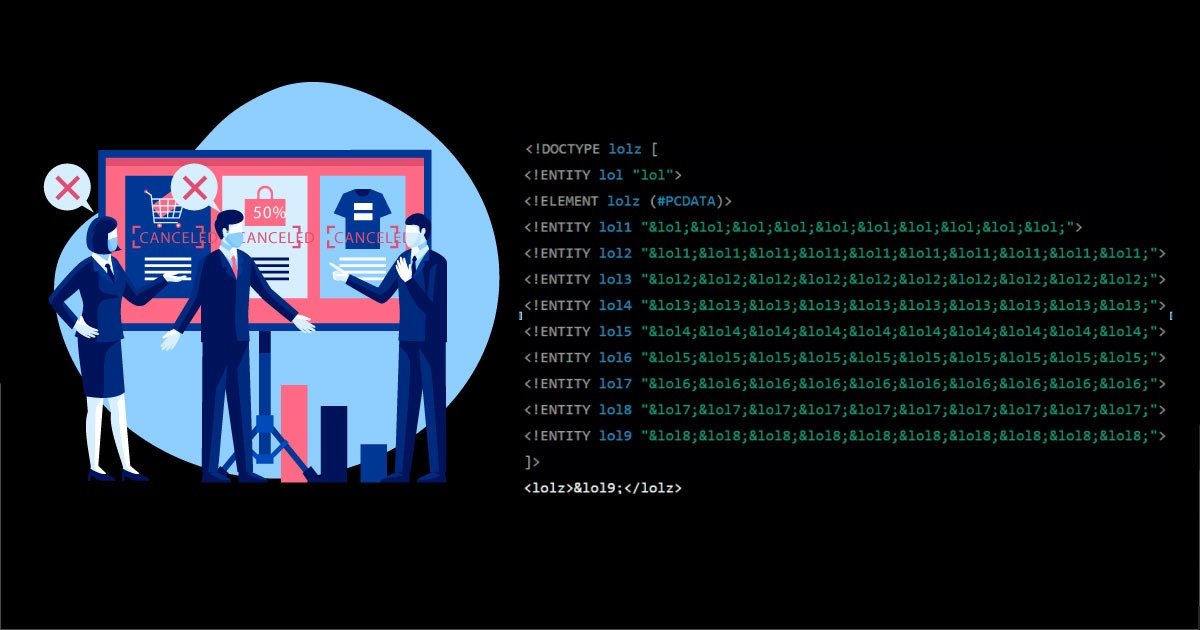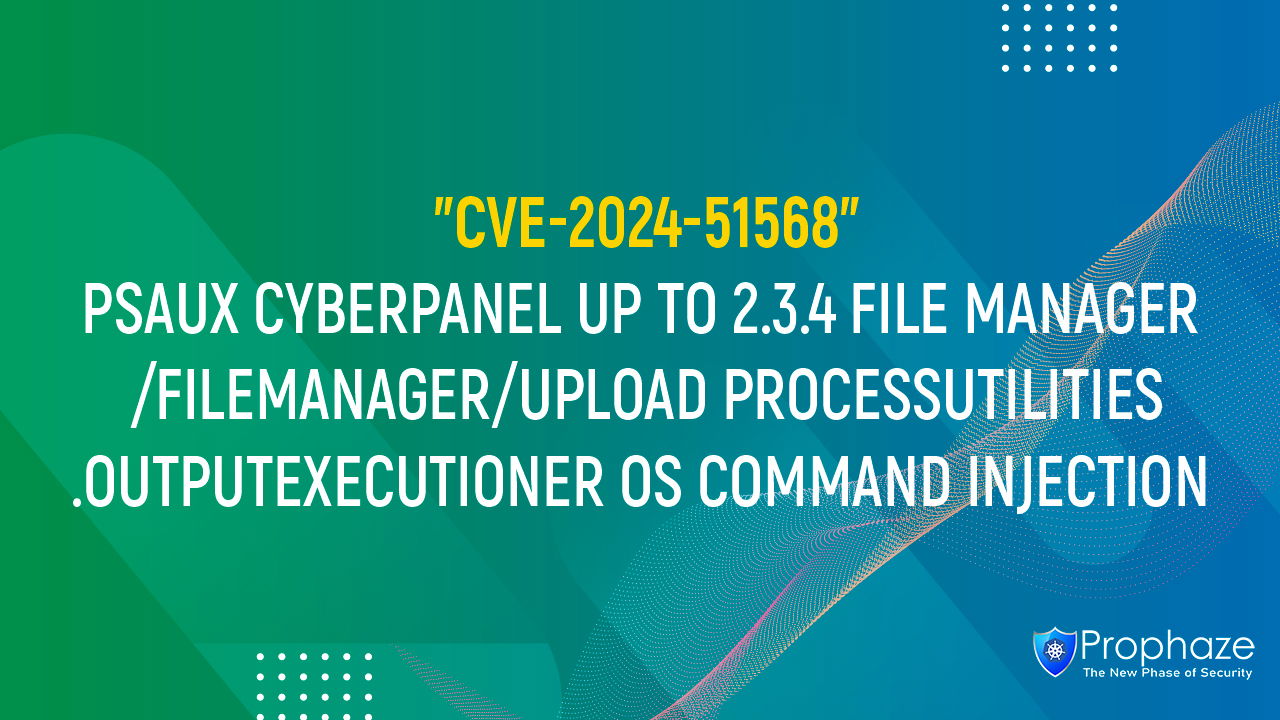Have you ever wondered how important XML is? And how insecure it can be if XML is parsed in an unsafe way?
Understanding the XML
XML stands for Extensible Markup Language. It is a text-based markup language derived from Standard Generalized Markup Language (SGML). XML tags identify the data and are used to store and organize the data, rather than specifying how to display it like HTML tags, which are used to display the data.
What is XML External Entities (XXE)
XML External Entities (XXE) is a type of security vulnerability that can occur when an application processes XML input from an untrusted source. In XXE attacks, an attacker can craft specially-crafted XML input that includes external entities (such as files, network resources, or system commands) that the application will attempt to access or execute. This can lead to various types of attacks.
XXE Vulnerability
XML external entity injection (also known as XXE) is a web security vulnerability that allows an attacker to interfere with an application’s processing of XML data.
Several applications transport data between the browser and the server using the XML format. Programs that perform this almost always process the XML data on the server using a standard library or platform API. The XML specification has a number of potentially harmful features, and even though the application does not typically use them, standard parsers support them. This leads to XXE vulnerabilities.
Configuration issues with XML parsers lead to XXE vulnerabilities. It is frequently possible to use XML entities from outside sources with XML parsers that are integrated with web servers. Using this method improperly could allow a hacker to access confidential data or include dangerous content.
What are the types of XXE Attacks?
-
Resource Exhaustion Attacks/Billion Laughs attack
-
Data Extraction Attacks
-
XXE to SSRF Attacks
-
File Retrieval
-
Blind XXE
Billion Laughs Attack
The Billion Laughs attack is a type of denial-of-service (DoS) attack that targets XML parsers. It works by sending an XML document to an application that contains a reference to an external entity that expands into a very large number of nested entities, overwhelming the parser and causing the application to crash or become unresponsive.
The attack gets its name from the fact that the external entity reference is typically a sequence of “lol” or “ha” strings, each nested within the next, resulting in a “billion laughs” or more.

Data Extraction Attacks
Data extraction attacks are malicious actions intended to take sensitive or valuable data from a company’s computer systems, databases, or other data repositories.
Attacks on data extraction can have serious effects on enterprises, including financial loss, harm to the organization’s reputation, loss of customers, and legal liability.
Some common types of data extraction attacks include:
SQL injection:
Attackers exploit vulnerabilities in web applications or databases to inject malicious SQL code, allowing them to extract sensitive data or execute unauthorized actions.
Cross-site scripting (XSS):
Attackers inject malicious scripts into legitimate websites or web applications, which then execute in users’ browsers and allow them to extract data or perform unauthorized actions.
Data scraping:
Attackers use automated tools to extract data from websites or databases without authorization, often for the purpose of reselling or using the data for malicious purposes.
Man-in-the-middle (MITM) attacks:
Attackers intercept communication between two parties, allowing them to extract sensitive information or perform unauthorized actions.
Insider attacks:
Employees or contractors with authorized access to data steal or extract data for malicious purposes.
Organizations can protect themselves from data extraction attacks by implementing robust security measures, such as regular software updates, strong access controls, employee training, and regular vulnerability assessments. It is also important to monitor network activity and have a response plan in place to quickly identify and respond to potential data breaches.
XXE to SSRF Attacks
XXE (XML External Entity) and SSRF (Server Side Request Forgery) are two different types of web application vulnerabilities. XXE is a vulnerability that allows an attacker to exploit an XML parser by injecting malicious XML code into an input field or parameter. This can lead to various attacks such as information disclosure, denial of service, and even remote code execution.
The system can still be exploited in the context of a XXE attack even if it doesn’t return the response with local file content to the attacker. The entity can be directed to a target company’s local IP address, which is only accessible through that company’s websites or network. The target application will call its local endpoint, which the attacker would not normally be able to access, if an intranet IP is included in the XXE payload. The term “SSRF” or “Server-Side Request Forgery” refers to this kind of attack.
On the other hand, SSRF is a vulnerability that allows an attacker to manipulate the URL parameters of an application to make it send requests to other servers. This can be used to bypass firewalls and access internal resources, as well as to launch attacks against other systems.
XXE can be used as a stepping stone for an SSRF attack. By injecting malicious XML code, an attacker can manipulate the URL parameter of a request to make it point to a resource they control. This resource can then be used to trigger an SSRF attack against other vulnerable systems.
For example, if an application is vulnerable to XXE injection, an attacker can inject an XML document that references an external entity that contains a URL pointing to their server. This URL can be manipulated to point to a vulnerable server on the internal network that can be attacked through SSRF.
To prevent XXE to SSRF attacks, it is important to sanitize all user inputs and validate all XML data to prevent injection attacks. Additionally, applications should use whitelist-based URL validation to ensure that all requests are made to trusted servers.
File Retrieval
A File Retrieval XXE attack is a type of XXE attack that aims to retrieve files from the targeted server using XML entities. This type of attack is also known as Blind XXE attack or Out-of-Band (OOB) XXE attack.
In this attack, the attacker injects malicious XML code containing a reference to a file on the server, which the attacker wants to retrieve. The XML code contains an entity that points to the file location, and the server processes the XML request, including the entity reference. If the server is vulnerable to XXE injection, it will attempt to resolve the entity reference and send the content of the file back in the XML response.
The attacker can then retrieve the file content by hosting a server that can receive the response from the victim server containing the content of the file. This allows the attacker to access sensitive files on the server, such as configuration files, user data, and other critical system files.
To prevent File Retrieval XXE attacks, developers should sanitize all user inputs and validate all XML data to prevent injection attacks. They should also use XML parsers that disable external entities and resolve references to external DTDs (Document Type Definitions). Additionally, it is recommended to use firewalls and intrusion detection systems that can detect and block external requests to untrusted servers.
Blind XXE
This type of attack can occur when the server does not return any error messages or any useful information to the attacker, but still processes the malicious XML input.
One common approach is to use a timing attack, in which the attacker includes a delay in the external entity file on the remote server. By analysing the response time from the server, the attacker can determine if the delay occurred, indicating that the server successfully processed the external entity and is vulnerable to a blind XXE attack.
The intention is to make the system fail and check if it throws out some sensitive information in the error response.
To prevent blind XXE attacks, it is important to properly sanitize all XML input and to disable external entity processing in XML parsers whenever possible. Additionally, server administrators should monitor their servers for suspicious activity, such as unexpected delays or abnormal resource usage, which may indicate a blind XXE attack in progress.
How to Prevent XXE Attacks?
To prevent XXE attacks, developers can take several measures such as
Disable XML external entities:
Disable the processing of external entities in XML parsers, or configure them to process only trusted sources. This can help prevent attackers from accessing or executing sensitive data on your system.
Use whitelisting:
Use a whitelist of allowed XML tags and attributes to prevent attackers from injecting malicious code into your system.
Validate XML input:
Validate all XML input to ensure that it conforms to a well-formed schema and does not contain any unexpected or malicious content.
Use secure coding practices:
Use secure coding practices such as input validation, output encoding, and parameterized queries to prevent attacks that exploit vulnerabilities in your application.
Keep software up to date:
Keep your XML parsing software and other system components up to date with the latest security patches and updates to prevent known vulnerabilities from being exploited.
Use a web application firewall:
Consider using a web application firewall that can detect and prevent XXE attacks and other types of web-based attacks.
Educate users:
Educate users about the risks of XXE attacks and how to identify and avoid suspicious or malicious content in XML input.
By implementing these measures, you can reduce the risk of XXE attacks and help ensure the security of your systems and applications.








